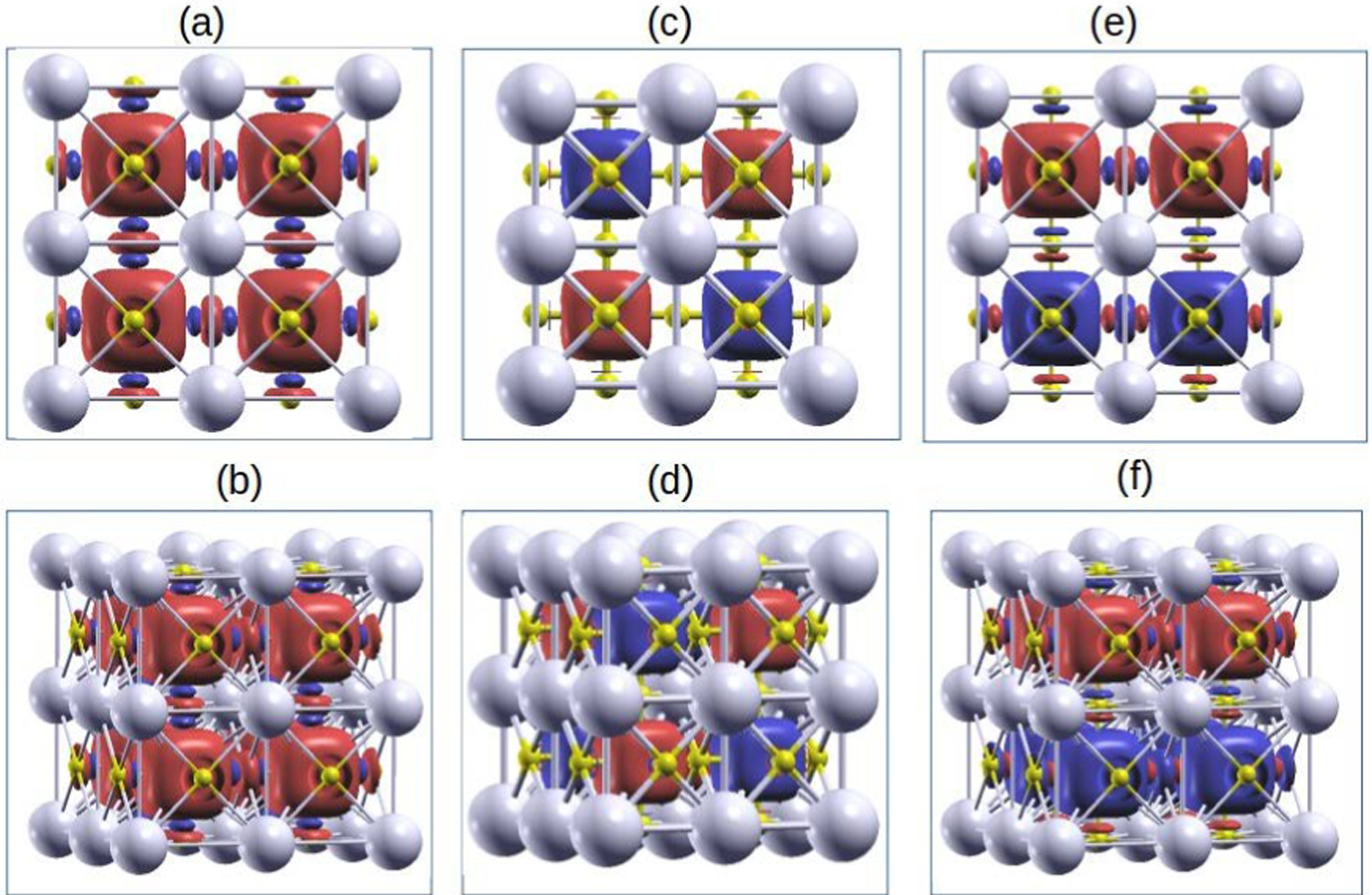https://doi.org/10.1140/epjp/s13360-024-04898-6
Regular Article
Exploring room-temperature ferromagnetism and half-metallicity in new halide perovskites RbCrX (X: F, Cl, Br, I) using first-principles and Monte Carlo simulations
(X: F, Cl, Br, I) using first-principles and Monte Carlo simulations
1
Department of Physics, COMSATS University Islamabad, Lahore, Pakistan
2
Department of Physics, Riphah International University, Lahore, Pakistan
3
School of Material Science and Engineering, Jiangsu University, 212013, Zhenjiang, Jiangsu, People’s Republic of China
b
altaf.urrahman@riphah.edu.pk
Received:
18
November
2023
Accepted:
12
January
2024
Published online:
1
February
2024
A new class of halide perovskite RbCrX (X = F, Cl, Br, I) compounds with a cubic crystal structure was examined using first-principles calculations. The proposed perovskite compounds exhibit promising stabilities in the cubic crystal structure, such as structural stability evidenced by the negative formation energy, phonon spectrum confirmed dynamic stability, and the Born-Huang stability criteria indicating mechanical stability. The computed electronic characteristics reveal the half-metallic nature of all these investigated compounds under ambient conditions, which is robust up to
(X = F, Cl, Br, I) compounds with a cubic crystal structure was examined using first-principles calculations. The proposed perovskite compounds exhibit promising stabilities in the cubic crystal structure, such as structural stability evidenced by the negative formation energy, phonon spectrum confirmed dynamic stability, and the Born-Huang stability criteria indicating mechanical stability. The computed electronic characteristics reveal the half-metallic nature of all these investigated compounds under ambient conditions, which is robust up to  volumetric strain. The GGA+SOC total energy calculation yields that the single-ion anisotropy is very small in all these compounds, and the z-axis is a hard axis in all these compounds. Based on the total energy, the difference in total energy is 0.007 meV with reference to the hard axis. Ultimately, we further studied FM, AFM1, and AFM2 interactions by considering
volumetric strain. The GGA+SOC total energy calculation yields that the single-ion anisotropy is very small in all these compounds, and the z-axis is a hard axis in all these compounds. Based on the total energy, the difference in total energy is 0.007 meV with reference to the hard axis. Ultimately, we further studied FM, AFM1, and AFM2 interactions by considering  supercell of a halide perovskite RbCrX
supercell of a halide perovskite RbCrX compounds. To estimate transition temperature (
compounds. To estimate transition temperature ( ), we used the mean field theory (MFT) and quantum Monte Carlo (MC) simulations. The estimated Curie temperature using QMC is 465.3 K, 536.7 K, 668.2 K, and 643.5 K with
), we used the mean field theory (MFT) and quantum Monte Carlo (MC) simulations. The estimated Curie temperature using QMC is 465.3 K, 536.7 K, 668.2 K, and 643.5 K with  error for RbCrF
error for RbCrF , RbCrCl
, RbCrCl , RbCrBr
, RbCrBr , and RbCrI
, and RbCrI compounds, respectively. Our finding provides fresh recommendations and predicts that halide perovskite RbCrX
compounds, respectively. Our finding provides fresh recommendations and predicts that halide perovskite RbCrX compounds are new candidate materials for room-temperature spintronic nanodevices application. For the first time, we are presenting the results for halide perovskite compounds based on rubidium and chromium atoms.
compounds are new candidate materials for room-temperature spintronic nanodevices application. For the first time, we are presenting the results for halide perovskite compounds based on rubidium and chromium atoms.
Supplementary Information The online version contains supplementary material available at https://doi.org/10.1140/epjp/s13360-024-04898-6.
Copyright comment Springer Nature or its licensor (e.g. a society or other partner) holds exclusive rights to this article under a publishing agreement with the author(s) or other rightsholder(s); author self-archiving of the accepted manuscript version of this article is solely governed by the terms of such publishing agreement and applicable law.
© The Author(s), under exclusive licence to Società Italiana di Fisica and Springer-Verlag GmbH Germany, part of Springer Nature 2024. Springer Nature or its licensor (e.g. a society or other partner) holds exclusive rights to this article under a publishing agreement with the author(s) or other rightsholder(s); author self-archiving of the accepted manuscript version of this article is solely governed by the terms of such publishing agreement and applicable law.





